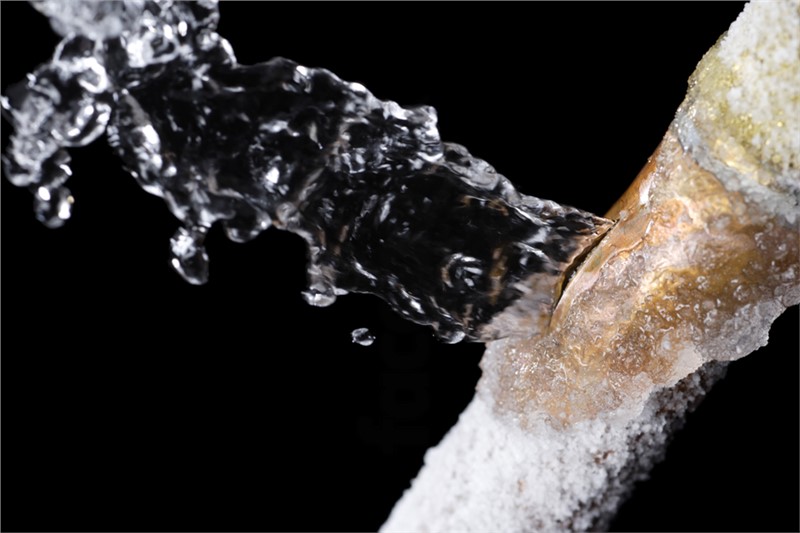They are making a few good annotation related to What Causes AC Pipes To Freeze? in general in this post which follows.

Introduction
Uncovering that your a/c pipe is frozen can be concerning, specifically throughout warm summer season when you count on your a/c the most. Understanding what to do in such a scenario is important to prevent more damage to your cooling system and ensure your convenience indoors.
Recognizing the Causes
Several elements can add to the freezing of an AC pipeline. Comprehending these reasons can aid you resolve the problem properly.
Lack of Airflow
One usual reason for an icy AC pipeline is inadequate airflow. When the airflow over the evaporator coil is limited, it can cause the coil to go down below freezing temperature level, causing ice formation on the pipeline.
Reduced Refrigerant Levels
Not enough refrigerant levels in your a/c system can also lead to an icy pipeline. Low cooling agent levels can trigger the stress in the system to drop, bring about the freezing of dampness on the evaporator coil.
Cold Weather Conditions
In chillier climates, freezing temperature levels outside can contribute to the freezing of air conditioner pipelines. If your AC system is not properly protected or if there are leakages in the ductwork, cold air can infiltrate the system, creating the pipe to freeze.
Dirty Air Filters
Filthy or clogged up air filters can limit airflow in your a/c system, bring about various problems, consisting of an icy pipeline. It's essential to replace or cleanse your air filterings system routinely to make sure correct airflow and avoid ice build-up.
Indicators of a Frozen Air Conditioning Pipe
Recognizing the indications of an icy a/c pipeline is crucial for prompt action.
Decreased Airflow
If you observe a substantial decline in air flow from your vents, it can show an icy pipe.
Ice Buildup on the Pipe
Visible ice accumulation on the cooling agent line or the evaporator coil is a clear sign of an icy AC pipeline.
Strange Sounds from the Unit
Unusual sounds, such as hissing or bubbling, originating from your air conditioner system can indicate that there's ice existing on the pipe.
Immediate Actions to Take
When faced with an icy air conditioner pipeline, it's necessary to act swiftly to prevent further damage to your cooling system.
Shutting off the AC
The primary step is to turn off your air conditioning unit to avoid the system from running and worsening the problem.
Looking for Blockages
Check the location around the interior device for any kind of blockages that might be obstructing airflow, such as furniture or curtains.
Defrosting the Pipe
You can utilize gentle methods like placing towels soaked in warm water around the frozen pipe to help thaw it gradually.
Safety nets
Taking safety nets can help prevent future occurrences of an icy air conditioning pipe.
Normal Maintenance Checks
Set up normal maintenance checks with a specialist HVAC specialist to ensure that your air conditioner system is running successfully.
Transforming Air Filters
Routinely replace or cleanse your air filters to prevent air movement restrictions and preserve optimal efficiency.
Insulating Exposed Pipes
If your AC pipes are subjected to cold temperatures, take into consideration protecting them to prevent freezing throughout winter months.
Seeking Professional Help
If DIY approaches fail to fix the issue or if you're unsure regarding exactly how to proceed, it's ideal to look for support from a qualified HVAC service technician.
When DIY Methods Fail
If your attempts to thaw the pipeline or address other issues are not successful, it's time to contact a specialist.
Importance of Hiring a Professional HVAC Technician
A qualified HVAC technician has the experience and devices required to diagnose and repair problems with your a/c system safely and properly.
Final thought
Managing an icy air conditioner pipe can be an irritating experience, yet understanding exactly how to react can assist reduce damages and recover comfort to your home. By understanding the causes, acknowledging the indicators, and taking punctual action, you can efficiently attend to the concern and prevent future incidents.
What to Do If Your AC Line Is Frozen
Make Sure All Supply and Return Air Vents Are Open
If you notice problems with airflow, the first thing you should do is check your supply and return vents. Supply vents distribute clean, conditioned air throughout your home. As this air becomes stale, it’s pulled into the return vent, where it’s reconditioned before being sent back out through the supply vent.
When these vents are closed, air won’t flow in the home. Before examining your AC, check the vents in every room and ensure they’re all open.
Check for a Dirty Air Filter
Another possible cause of limited airflow is a dirty air filter. Your air conditioner’s filters catch elements you don’t want to breathe in, such as dirt and dust. Over time, filters can become clogged, ultimately blocking air from flowing in and out. The lack of airflow can then cause the entire coil to freeze and will completely restrict any air from moving through it. The AC may need to be powered off for one to two days to allow the coil to thaw after replacing the filter to allow proper functioning of the unit. This debris can also accumulate on your AC’s evaporator coil, requiring a more serious repair. In general, air filters should be cleaned regularly (about every two weeks).
Assess Your Outdoor Unit
In addition to checking your AC, assessing the outdoor unit is a good idea. Also known as the condensing unit, it works with your interior unit to release heat outside. An issue with the outdoor unit can result in rising internal temperatures.
Overgrown Shrubs or Clogged Leaves
From leaves and twigs to shrubs and debris, there’s no shortage of outdoor elements that can accumulate around your condensing unit. When these elements get lodged inside the unit, they can block airflow. Fortunately, removing the blockage can solve the problem.
Sounds of a Broken Fan
Shrubs and leaves aren’t the only things that can impede your outdoor unit’s airflow. If the fan is broken, the unit won’t be able to properly get rid of heat — which means the internal temperature won’t go down. First, make sure the fan is spinning. If it is, check for the following sounds of a broken fan:
Buzzing Rattling Screeching Hissing Clicking Preventative Measures
Nobody wants to deal with a frozen AC line. In addition to causing problems with your air conditioner, they require professional repairs. On the bright side, there are preventative measures you can take to help ensure this issue doesn’t arise in the first place.
https://www.coopergreenteam.com/blog/what-to-do-if-ac-line-frozen

Hopefully you enjoyed reading our excerpt on Air Conditioner Frozen? How To Fix your Frozen AC Line. Thanks a lot for spending some time to read our posting. If you enjoyed reading our blog entry if you please do not forget to share it. Bless you for your time. Come back soon.
Call Today